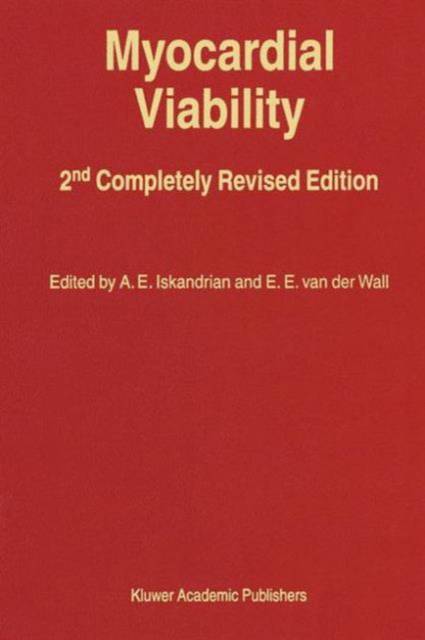
Bedankt voor het vertrouwen het afgelopen jaar! Om jou te bedanken bieden we GRATIS verzending (in België) aan op alles gedurende de hele maand januari.
- Afhalen na 1 uur in een winkel met voorraad
- In januari gratis thuislevering in België
- Ruim aanbod met 7 miljoen producten
Bedankt voor het vertrouwen het afgelopen jaar! Om jou te bedanken bieden we GRATIS verzending (in België) aan op alles gedurende de hele maand januari.
- Afhalen na 1 uur in een winkel met voorraad
- In januari gratis thuislevering in België
- Ruim aanbod met 7 miljoen producten
Zoeken
Myocardial Viability
€ 209,95
+ 419 punten
Omschrijving
AMI E. ISKANDRIAN & ERNST E. VAN DER WALL The first edition of this book was published in 1994. Since then important advances have occurred in the field of myocardial viability. This, coupled with increasing interest by the scientific community in the broader issues of its relevance to patient care, suggested to us the need to write the second edition. We are most fortunate to have the help of a distinguished group of experts who have helped shape the field; we appreciate their commitments and contributions. Almost all chapters have been radically modified. Chapter 1 deals with pathophysiology of myocardial hibernation and stunning; Chapter 2 with apoptosis; Chapter 3 with the role of positron emission tomography; Chapters 4 and 5 with the role of single photon emission computed tomography with thallium-201 and technetium agents, respectively; Chapter 6 with the role of SPECT fatty acid imaging; Chapter 7 with the role of SPECT FDG imaging; Chapter 8 with the role of cardiac catheterization angiography; Chapter 9 with the role of echocardiography; Chapter 10 with the role of magnetic resonance imaging; and Chapter 11 with clinical applications. Finally, Chapter 12 provides a short summary.
Specificaties
Betrokkenen
- Uitgeverij:
Inhoud
- Aantal bladzijden:
- 244
- Taal:
- Engels
- Reeks:
- Reeksnummer:
- nr. 226
Eigenschappen
- Productcode (EAN):
- 9780792361619
- Verschijningsdatum:
- 31/01/2000
- Uitvoering:
- Hardcover
- Formaat:
- Genaaid
- Afmetingen:
- 156 mm x 234 mm
- Gewicht:
- 539 g

Alleen bij Standaard Boekhandel
+ 419 punten op je klantenkaart van Standaard Boekhandel
Beoordelingen
We publiceren alleen reviews die voldoen aan de voorwaarden voor reviews. Bekijk onze voorwaarden voor reviews.








